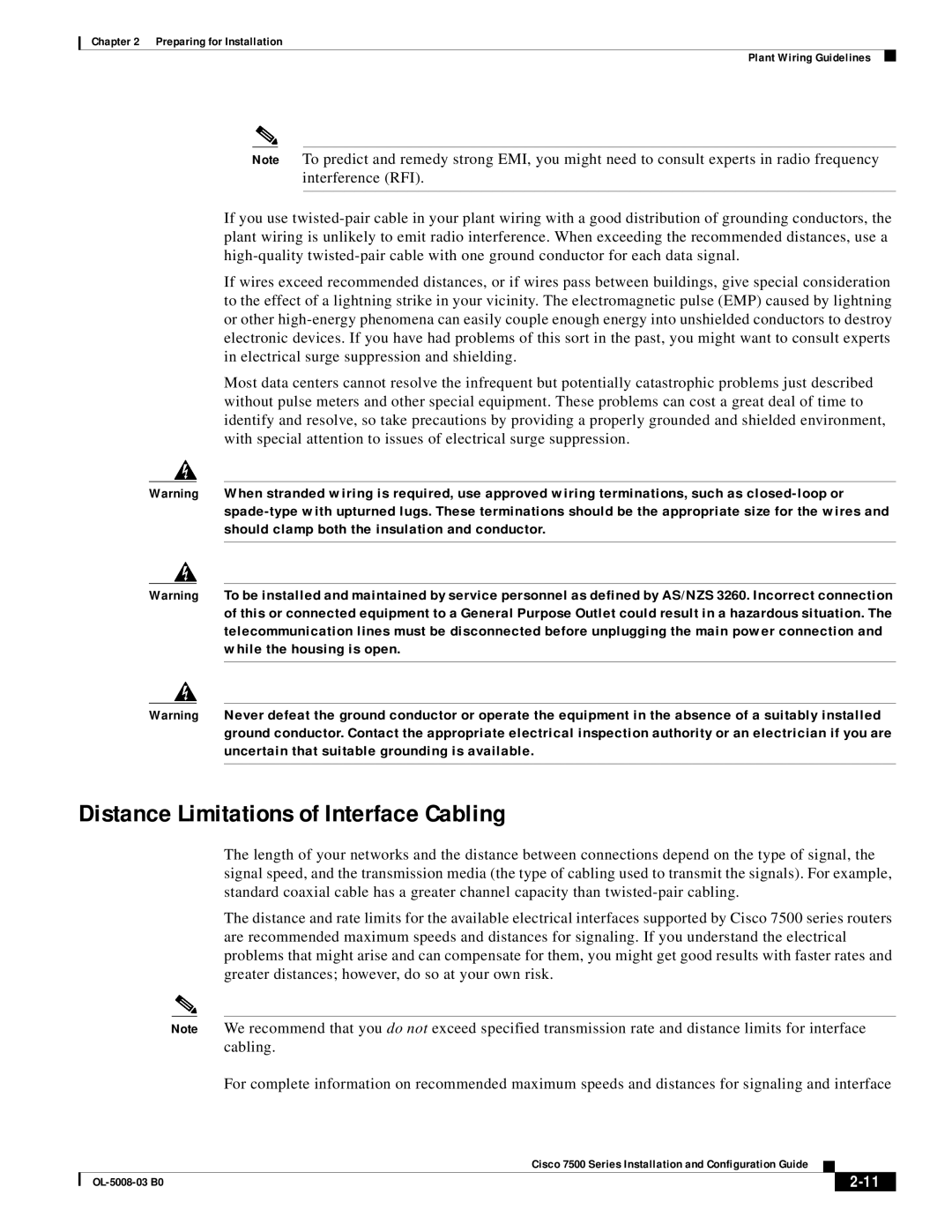
Chapter 2 Preparing for Installation
Plant Wiring Guidelines
Note To predict and remedy strong EMI, you might need to consult experts in radio frequency interference (RFI).
If you use
If wires exceed recommended distances, or if wires pass between buildings, give special consideration to the effect of a lightning strike in your vicinity. The electromagnetic pulse (EMP) caused by lightning or other
Most data centers cannot resolve the infrequent but potentially catastrophic problems just described without pulse meters and other special equipment. These problems can cost a great deal of time to identify and resolve, so take precautions by providing a properly grounded and shielded environment, with special attention to issues of electrical surge suppression.
Warning When stranded wiring is required, use approved wiring terminations, such as
Warning To be installed and maintained by service personnel as defined by AS/NZS 3260. Incorrect connection of this or connected equipment to a General Purpose Outlet could result in a hazardous situation. The telecommunication lines must be disconnected before unplugging the main power connection and while the housing is open.
Warning Never defeat the ground conductor or operate the equipment in the absence of a suitably installed ground conductor. Contact the appropriate electrical inspection authority or an electrician if you are uncertain that suitable grounding is available.
Distance Limitations of Interface Cabling
The length of your networks and the distance between connections depend on the type of signal, the signal speed, and the transmission media (the type of cabling used to transmit the signals). For example, standard coaxial cable has a greater channel capacity than
The distance and rate limits for the available electrical interfaces supported by Cisco 7500 series routers are recommended maximum speeds and distances for signaling. If you understand the electrical problems that might arise and can compensate for them, you might get good results with faster rates and greater distances; however, do so at your own risk.
Note We recommend that you do not exceed specified transmission rate and distance limits for interface cabling.
For complete information on recommended maximum speeds and distances for signaling and interface
|
| Cisco 7500 Series Installation and Configuration Guide |
|
| |
|
|
| |||
|
|
|
|
| |
|
|
|
| ||
